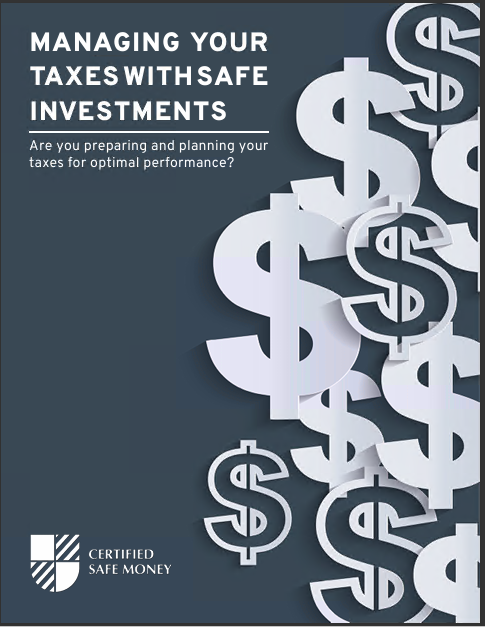Key Takeaways
-
Fixed index annuities offer market-linked growth potential without direct exposure to market losses, combining growth with safety.
-
Understanding participation rates, caps, surrender charges, and rider fees helps ensure you choose an annuity aligned with your financial goals.
How Fixed Index Annuities Combine Safety and Growth
Fixed index annuities (FIAs) have become popular among cautious investors who seek stable returns without the stress of market volatility. If you’re someone who values the security of your principal but doesn’t want to sacrifice the potential for reasonable growth, FIAs might seem like an attractive investment option. But as with all financial instruments, it’s important to clearly understand their essential features before jumping in. Let’s dive deep into the key characteristics you must know about fixed index annuities.
1. Protect Your Principal—No Direct Market Risk
One of the most compelling reasons investors gravitate toward fixed index annuities is the built-in protection of your principal. Unlike investing directly in stocks or mutual funds, your FIA isn’t directly exposed to market losses. When the market experiences downturns, your annuity’s value remains secure, safeguarding your initial investment.
The Importance of Zero-Floor Guarantee
FIAs typically include what’s known as a zero-floor guarantee. This simply means that no matter how poorly the market performs during any specific time period, the minimum credited interest rate to your account won’t drop below zero. Your account value won’t decrease because of market declines. If peace of mind is a top priority, this feature alone can make FIAs highly appealing.
However, remember that while your principal remains protected, it’s crucial to understand that your returns are also capped or limited based on specific terms we’ll discuss shortly.
2. Crediting Methods and Participation Rates—Know How Growth Happens
Fixed index annuities grow based on market performance through various crediting methods. The most common methods include annual point-to-point, monthly averaging, and monthly sum methods. Each method calculates your returns differently, so understanding how these crediting options work can help you pick the right annuity for your investment goals.
Participation Rates Explained
Your FIA’s participation rate determines how much of the underlying index’s increase you’ll actually earn. For example, if your participation rate is set at 70% and the chosen market index rises 10% over the contract period, your annuity account will gain 7%. Participation rates vary widely from one annuity to another, often ranging between 25% and 100%, and they can significantly impact your potential returns.
Understanding the implications of your annuity’s participation rate is essential. Always clarify how frequently your provider can change participation rates, and whether there’s a guaranteed minimum rate.
3. Caps and Spreads—The Limitations on Your Gains
While fixed index annuities provide downside protection, your gains come with limitations—specifically through caps and spreads. These limits mean that your returns may not fully reflect the performance of the underlying market index.
What is a Cap?
A cap limits your maximum gain within a specified period. Suppose your FIA sets a cap at 8% annually. If the market index increases by 12% during that year, your annuity crediting would be capped at 8%. You forfeit any gains beyond this level. Caps vary by contract, so carefully consider this when evaluating your annuity options.
Understanding Spreads
Instead of caps, some FIAs use spreads to limit returns. A spread, typically a percentage, is deducted from the market’s gain before the credit is applied to your account. For example, if the index increases by 10% and your spread is 3%, your credited interest would be 7%. Knowing whether your FIA uses caps or spreads—and how they impact potential earnings—is vital before investing.
4. Surrender Charges and Liquidity—Knowing the Costs of Early Withdrawals
Fixed index annuities are designed as long-term financial instruments. To discourage early withdrawal, FIAs often include surrender charges, usually applicable for a period ranging from 5 to 15 years after purchasing your annuity. During this surrender period, withdrawing more than a specified percentage of your annuity’s value typically incurs charges.
How Surrender Charges Work
Surrender charges typically decrease over time. For instance, your FIA may start with a 10% surrender charge in the first year, decreasing by 1% annually until it reaches zero. If you withdraw funds early, you not only pay this surrender charge but may also lose part of your interest earnings. Always check the exact surrender schedule in your annuity contract.
Penalty-Free Withdrawals
Most FIAs allow penalty-free withdrawals up to a certain percentage, often around 10%, annually. However, withdrawing more could trigger costly penalties. Understanding these liquidity limits is crucial. If liquidity is important, an FIA might not be your ideal investment vehicle, or you might want to ensure you’re comfortable with these restrictions.
5. Optional Riders—Added Benefits and Their Costs
FIAs often come with optional riders to customize your annuity further. These features may include guaranteed lifetime income riders, death benefits, or long-term care benefits. While appealing, these riders typically come with extra fees, potentially reducing your overall return.
Income Riders for Lifetime Security
One popular optional rider is the guaranteed lifetime income rider, providing you with predictable income payments throughout your retirement. This option transforms your annuity from merely an investment vehicle into a guaranteed income stream, effectively hedging against longevity risk.
However, adding an income rider usually involves additional costs, often 0.5% to 1% annually. Over time, these fees can substantially affect your net returns. Evaluate these riders carefully—make sure their benefits justify their costs.
Death Benefits and Long-Term Care Riders
Death benefit riders guarantee a minimum payout to your beneficiaries, often protecting them from market downturns affecting your annuity’s value. Similarly, long-term care riders help cover healthcare costs if you become unable to perform basic daily activities. Both riders come at a price, usually in the form of annual charges or reduced potential interest credits.
Understanding exactly how these riders work, their associated fees, and their impact on your FIA’s performance is essential before opting in.
Weighing Your Choices Wisely
Investing in fixed index annuities can be an attractive strategy if you prioritize financial stability and moderate growth potential. However, knowing exactly how these annuities operate—their guarantees, crediting methods, caps, surrender charges, and optional riders—is crucial to making an informed decision.
Remember, FIAs offer unique features tailored toward conservative investors aiming to balance safety with potential returns. While the principal protection feature can offer peace of mind, carefully assess participation rates, caps, surrender charges, and riders to ensure your investment aligns closely with your retirement and financial objectives.
Before finalizing your investment, always review all documentation carefully, seek professional guidance if necessary, and ensure you’re fully aware of all the details. Making an informed decision today can significantly impact your financial security tomorrow.











